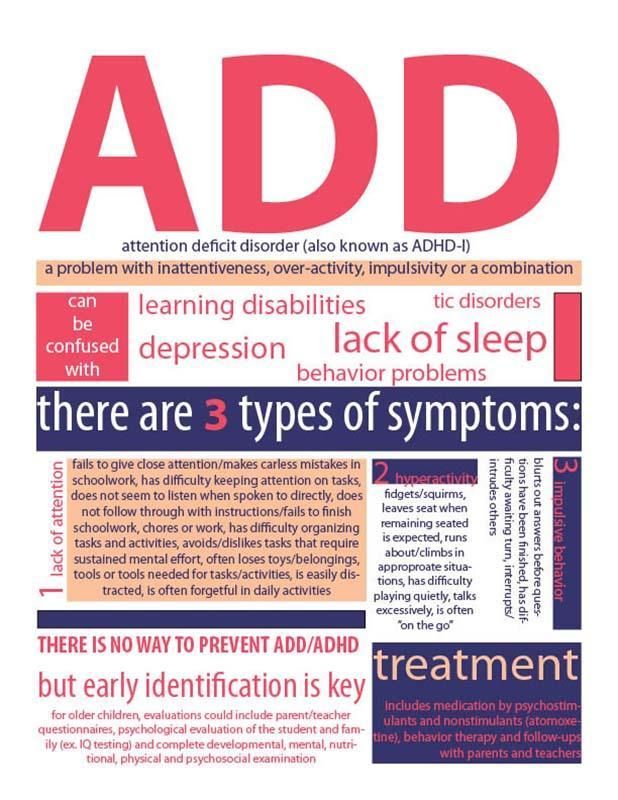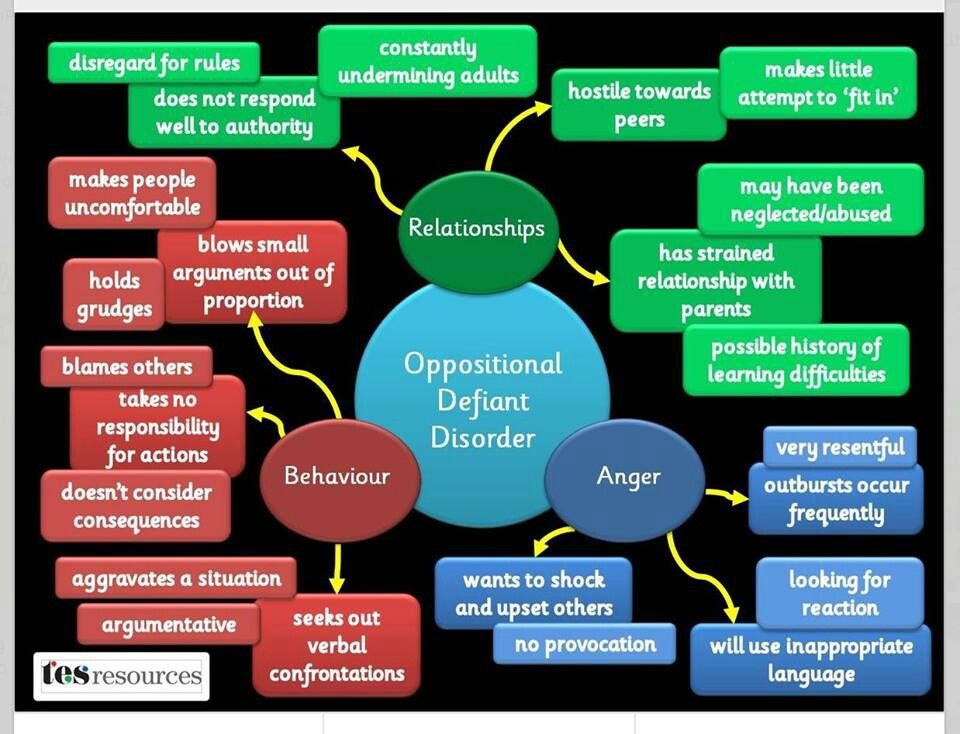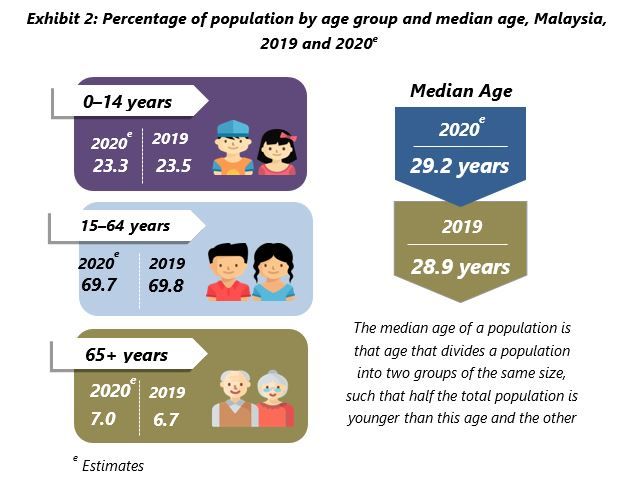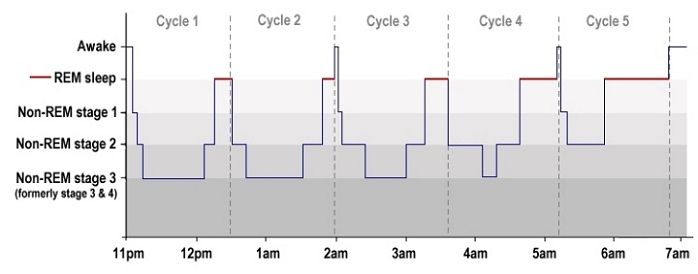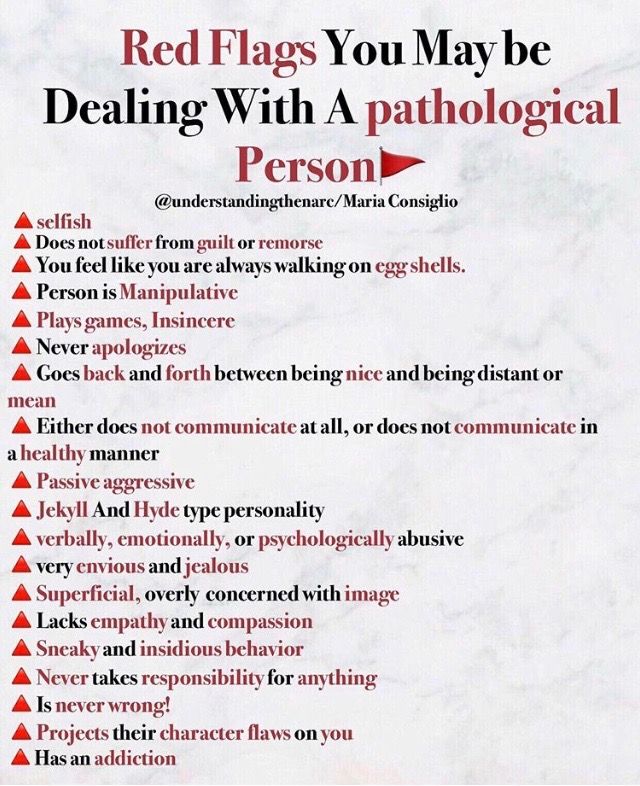Empathy deficit disorder test
Empathy Deficit Disorder Test - Free Confidential Results Online
What is Empathy Deficit Disorder?
Empathy is an important human ability that allows us to relate to one another. Specifically, it’s the act of recognizing and sharing the feelings of another person. In psychology, two types of empathy are recognized. One is affective empathy, which is when you share and/or feel the emotions of another individual. Affective empathy may also be called primitive empathy or emotional empathy. Cognitive empathy, on the other hand, is when you can process, understand, and relate to another person’s emotions, as well as their perspective on a situation.
Empathy deficit disorder, or EDD, impacts an individual’s ability to feel empathy. Depending on its cause, empathy deficit disorder may affect cognitive empathy, affective empathy, or both. Generally speaking, empathy deficit disorder impacts affective empathy more significantly than cognitive empathy. In people with bipolar disorder, for example, cognitive empathy is minimally affected (if at all), but affective empathy is often greatly compromised.
Empathy deficit disorder can have severe mental health complications for the affected individual. But, it may also cause hardship for people who interact with the affected individual. The prevalence of empathy deficit disorder is thought to be growing in our society.
Signs of Empathy Deficit Disorder
A person with empathy deficit disorder may seem to live in a world in which their needs and desires are their only reality. The needs and desires of the people around them, perhaps even loved ones, may be treated as entirely irrelevant or unimportant. This thought pattern may lead to the following behaviors:
- Coldness or indifference towards people who are struggling.
- Quickness to criticize others before considering their circumstances.
- A sense of entitlement and expectation of having their needs fulfilled.
- Difficulty showing appreciation for favors.
- Difficulty feeling happy or congratulatory towards others.
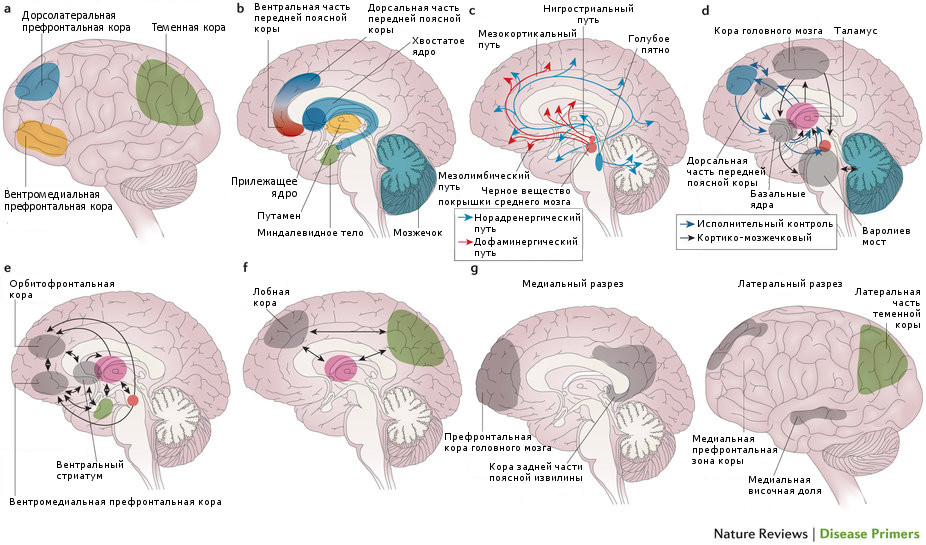
- Difficulty in relationships with family and friends.
- Difficulty making new friends.
- Difficulty building meaningful emotional connections with others.
- Only discussing themselves and poor listening skills in social situations.
- Tendency to place blame on others when they behave in a way that hurts others.
- Belief that when others are hurt as a result of their actions, it’s due to the other person’s oversensitivity.
How is Empathy Deficit Disorder Treated?
Self-treatment is a viable treatment option for empathy deficit disorder if the affected individual is able to recognize the condition in him or herself and the need to improve. Mindfulness exercises and exercises designed to build empathy can, with time and discipline, treat empathy deficit disorder. An example of an empathy-building exercise is to consider the parts of your argument that someone disagrees with in a conflict, then working to see the conflict from their perspective.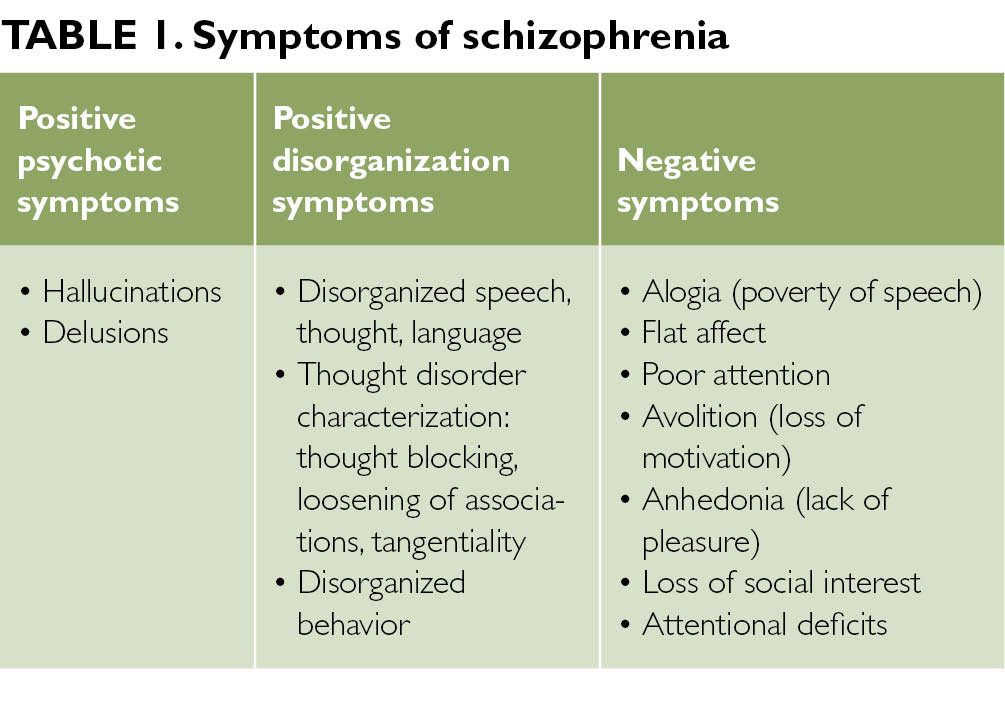
In some cases of empathy deficit disorder, psychotherapy may be an effective treatment option. A trained therapist can provide help, guidance, and specialized exercises to practice for building empathy. Cognitive behavioral therapy is a type of psychotherapy that may help you recognize the thought patterns that are lacking empathy, then replace them with new, more empathetic thoughts.
If empathy deficit disorder is caused by an underlying condition, treatment for that condition may need to be received to address the empathy deficit. Narcissism and bipolar disorder are conditions that can lead to empathy deficit disorder.
All You Need To Know About Empathy Deficit Disorder
Mental Disorders
Last Update on July 6, 2022 : Published on July 21, 2021
Talking about putting ourselves in someone else’s shoes might be easy but actually doing it might not be as easy for some people.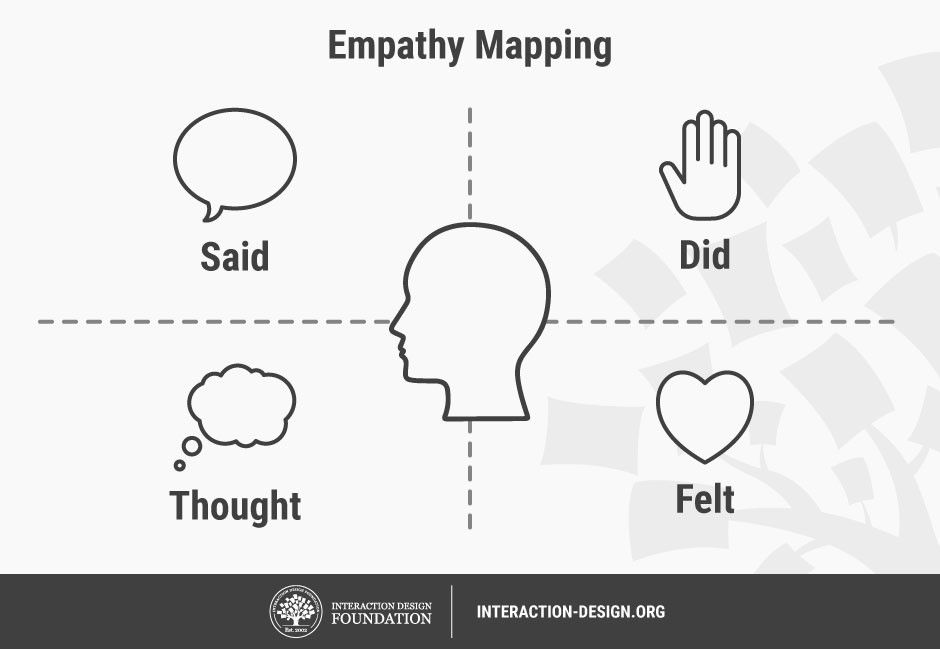 Empathy is the ability that makes us feel emotionally connected to others. This lack of empathy, of a moral compass, can be termed Empathy Deficit Disorder (EDD).
Empathy is the ability that makes us feel emotionally connected to others. This lack of empathy, of a moral compass, can be termed Empathy Deficit Disorder (EDD).
In this article, I’ll be helping you understand what empathy deficit disorder is, its symptoms, and how lack of empathy can affect our mental and emotional health.
In our day-to-day lives, empathy plays an important role and makes us capable of reacting with compassion to a peer, family member, friend, or co-worker when we see them struggling with emotions or situations such as a death of a loved one, coping with divorce, losing a job, etc.
There are some people such as highly sensitive people who experience hyper empathy. They are sensitive and highly attuned to others’ emotions and feelings. On the other hand, some people experience a lack of empathy, where they fail to understand and connect with another person, emotionally. This empathy deficiency can cause a rift in relationships and social connections.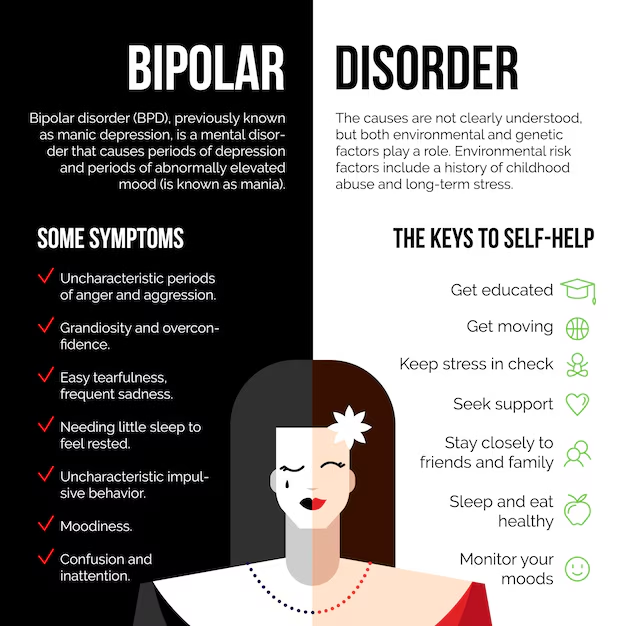
As human beings, we can feel, identify, and express emotions. However, when one fails to recognize or emotionally connect with another, they can be described using the term empathy deficit disorder or EDD.
This, not exactly a mental health disorder, can result in a person facing difficulty forming meaningful relationships, connecting socially, and even managing conflicts.
EDD can also be a symptom of some specific mental health disorders such as:
- Narcissistic Personality Disorder
- Antisocial Personality Disorder
- Bipolar Disorder
- Borderline Personality Disorder
- Autistic Spectrum Disorder
A person with empathy deficit disorder often believes that their wants, needs, and expectations are more important than those of their loved ones.
However, not all struggling with mental health disorders may struggle with the lack of empathy. For instance, your partner struggling to understand your emotional needs can be someone with empathy deficit disorder and may not know it. It could also be a friend who gets angry when things don’t go their way.
For instance, your partner struggling to understand your emotional needs can be someone with empathy deficit disorder and may not know it. It could also be a friend who gets angry when things don’t go their way.
Being empathetic not only improves our emotional and social wellness but general health and wellness too.
What Might Be The Symptoms Of Empathy Deficit Disorder?
Empathy deficit disorder symptoms can be:
1. Others’ Emotions Makes You Squirm
Here, we are specifically talking about the emotional symptoms of empathy deficit disorder. In this case, a person with a lack of empathy only feels discomfort and discomfort when the feelings and emotions of others are involved.
For example, if you’re struggling with a lack of empathy and you see your partner upset or sad. Here, the thought in your mind would be that they need attention. You will not bother with asking them and understanding their problem.
People with empathy deficit disorder often struggle with making emotional connections and fulfilling the emotional needs of their loved ones.
2. You’re More Focused On Your Goals & Needs
Lack of empathy is common in people who are focused and driven towards personal development. It can also be common in people with self-help addiction. You need to be independent and assertive only encourages you to focus on your goals and needs.
In other words, others’ problems are not your problems. Only yours are. Being empathetic means being in tune with others and knowing that other people, their needs, and goals are as important as you and yours.
3. You Worry About Yourself More
An empathetic person is concerned about society and the betterment of their community as a whole. However, a person with empathy deficit disorder is only interested in events that benefit them and worry only about themselves in the long run.
People with a lack of empathy are also those who say that climate change doesn’t interest them because what happens in the future is not of concern to them as they won’t be alive by then.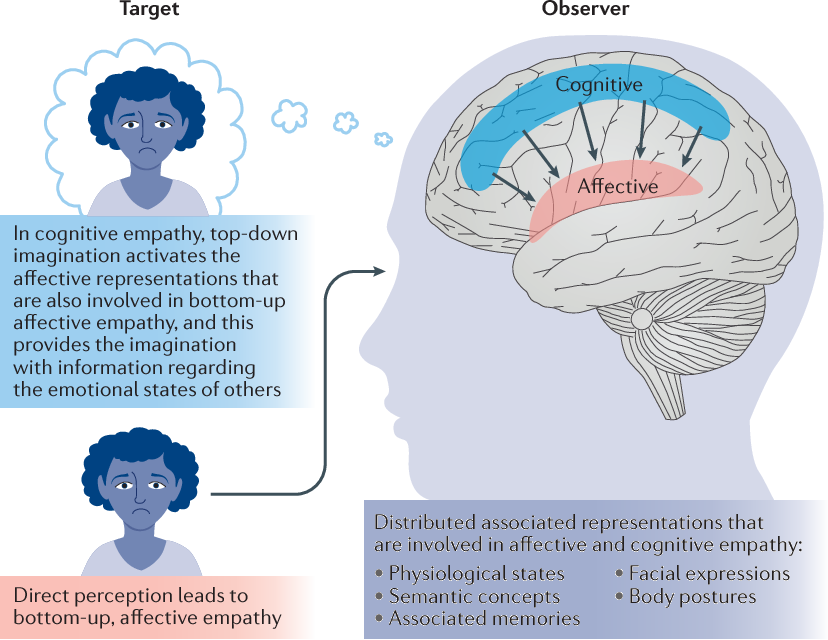
4. You’re Quick To Criticize & Judge
An empathetic person knows the need to understand and connect with others’ needs and emotions before they make a judgment. Someone with an empathy deficit disorder is quick to criticize and judge others. They’re quick at disapproving of others’ views, feelings, and opinions.
These empathy deficit disorder symptoms can help you understand if you or your partner is struggling with this disorder. There is an empathy deficit disorder test that can be taken online or under the supervision of a mental health professional to determine your empathy quotient.
Managing Empathy Deficit Disorder
The emotions and behaviors concerning personality disorders can be difficult to diagnose. Empathy deficit disorder, while not a recognized disorder in the DSM-5 can still be managed with simple steps.
Empathy deficit disorder treatment is not much but with the help of these ways, you can learn to build empathy. Empathy deficit disorder in relationships can be managed by:
Empathy deficit disorder in relationships can be managed by:
- Self-Reflection: Understanding ourselves and our emotions before we can begin to understand others is important. You can try these self-reflection prompts to get started.
- Building Connections: For someone who struggles with forming connections, this can be hard. But try to put yourself in the other person’s situation. Think about their hopes, goals, and dreams. Find things you have in common with them. Fostering a connection with them can help you build empathy.
- Counseling: With the help of a mental health professional, you can learn how empathy is important for our overall wellness. Counseling is an effective way to understand EDD, its symptoms, and how it is connected to your mental health.
Another way to treat empathy deficit disorder is to consult a therapist. Therapy or counseling also offers a safe, non-judgmental space for you to express your feelings, emotions, opinions, and thoughts.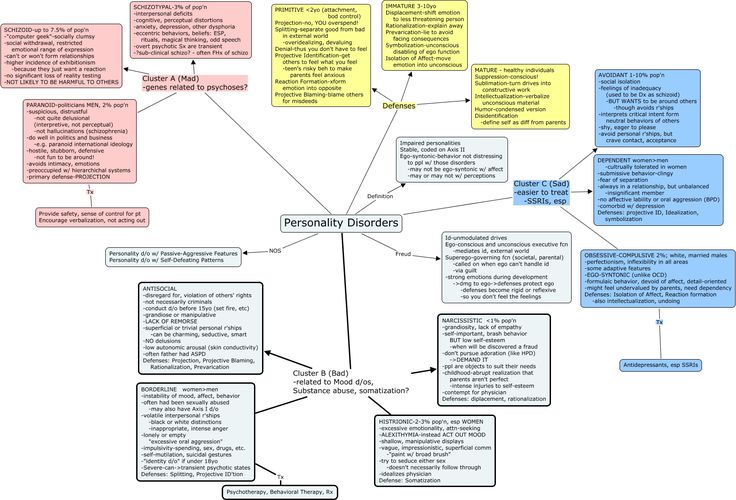 Moreover, a therapist can offer better ways to develop empathy and can teach you how to communicate better with others when you’re struggling with empathy deficit disorder.
Moreover, a therapist can offer better ways to develop empathy and can teach you how to communicate better with others when you’re struggling with empathy deficit disorder.
Frequently Asked Questions
Q1 : What causes empathy deficit disorder?
Many psychiatric conditions can cause empathy deficit disorder or empathy deficiency. These conditions or traits can be psychopathy, antisocial personality, borderline personality, narcissism, autism, and alexithymia.
Q2 : How do I know if I have empathy deficit disorder?
You can refer to the symptoms listed in this article but if you suspect your partner or you struggling with empathy deficit disorder then you may have trouble making new friends, difficulty making emotional connections, you’re quick to criticize others, and may often struggle to show emotions towards others.
Q3 : What part of the brain causes a lack of empathy?
Multiple areas in the frontal lobe are responsible for empathy. For example, the right supramarginal gyrus helps us overcome self-centeredness and the orbitofrontal cortex of the brain helps us with reaction processing and can play a big role in helping us react to others’ emotions and feelings.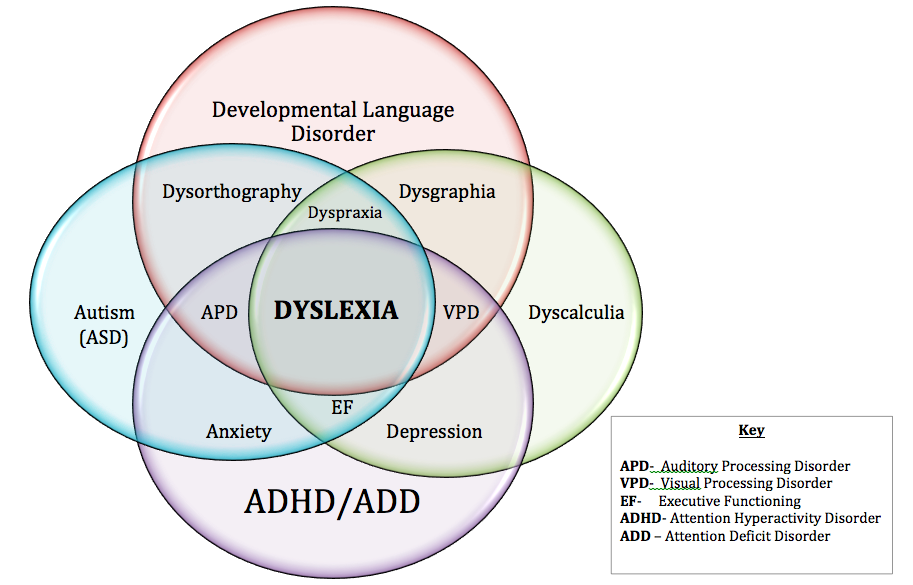 When either of these areas of the brain is damaged for any reason, empathy deficit disorder can occur.
When either of these areas of the brain is damaged for any reason, empathy deficit disorder can occur.
Q4 : Is empathy deficit disorder serious?
Empathy and compassion are important skills that can help us build connections, make good decisions, and live meaningful lives. Any lack of empathy can have serious consequences. For example, empathy deficit disorder prevents you from tuning in to other people’s experiences, especially those who think and feel differently than you. This can cause personal conflicts, miscommunication in relationships, and hatred towards others.
Q5 : What are the long-term consequences of empathy deficit disorder?
Some of the long-term consequences of empathy deficit disorder include problems in intimate and close relationships, poor communication, and a lack of altruistic behaviors. Empathy deficit disorder in the healthcare industry can have severe consequences as healthcare workers with EDD can result in uncompassionate care and poor patient health.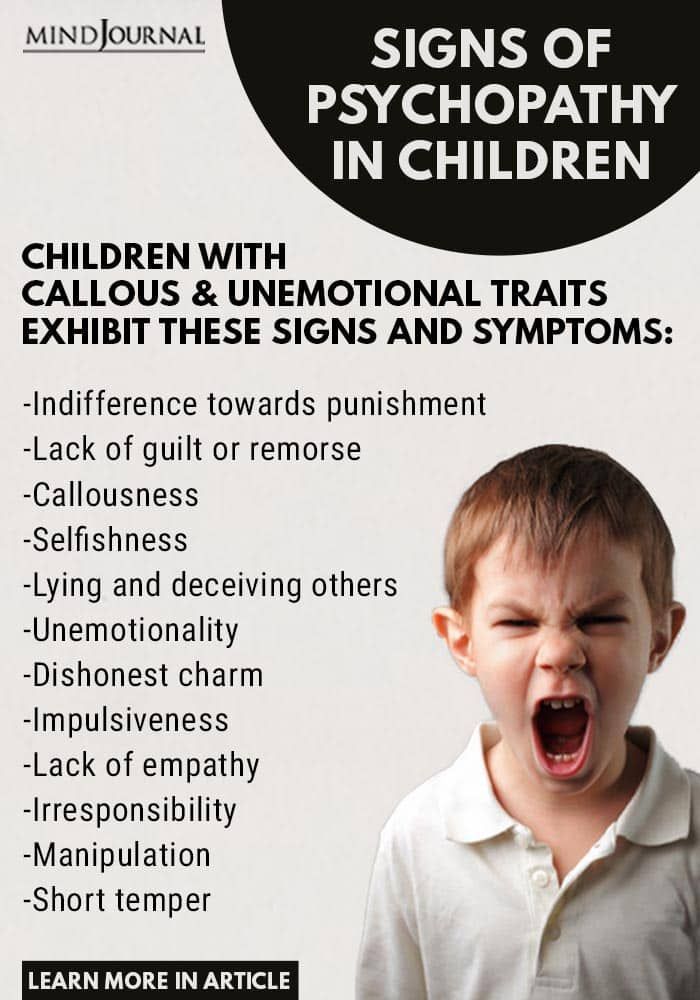
For more on empathy deficit disorder, or to connect with a counselor, you can write to us at [email protected] or DM us on social media. You can also comment below to let us know your thoughts!
Take Care!
test - Peaasi.ee
1. Do you think too much or negatively about your body or its weight?
2. Do you rate your appearance primarily by how much you weigh?
3. Does your mood depend on how much and what you ate?
4. Do you sometimes feel like you have lost control of your food?
5. Do you consider yourself complete, even if others say otherwise?
6. Can you say that you think too much about food, make your plans with nutrition in mind, and that this affects your relationships with other people?
7. Is it important for you to always look perfect?
8. Has your weight changed by more than 7 kg in the last 3 months?
9. Have you ever vomited when you ate too much?
10. Do you avoid certain food groups or individual foods because they might ruin your appearance?
If you answered yes
Less than 3 points
Your answers to the questions indicate that you are comfortable in your body. You likely have good, healthy self-esteem. You are confident enough not to let a small change in appearance affect your self-esteem. You eat to live and have a healthy relationship with food.
You likely have good, healthy self-esteem. You are confident enough not to let a small change in appearance affect your self-esteem. You eat to live and have a healthy relationship with food.
3 to 5 points
Your answers indicate that weight and menu are very important to you. Maybe even too much? Are you sure you pay enough attention to the rest of your life? Are you sure that by adjusting your diet and weight, you are not trying to solve other problems in your life? Try to do other things, pay enough attention to communication. Let food and body be one of the aspects of life, but not the most important.
5 to 8 points
Your responses make you think that perhaps you pay more attention to food and body than to other important aspects of your life. Are you sure that the body and food are really as important as you think? Often, solving other problems helps relieve stress associated with nutrition and weight. These problems can be, for example, relationships with loved ones, low self-esteem, etc.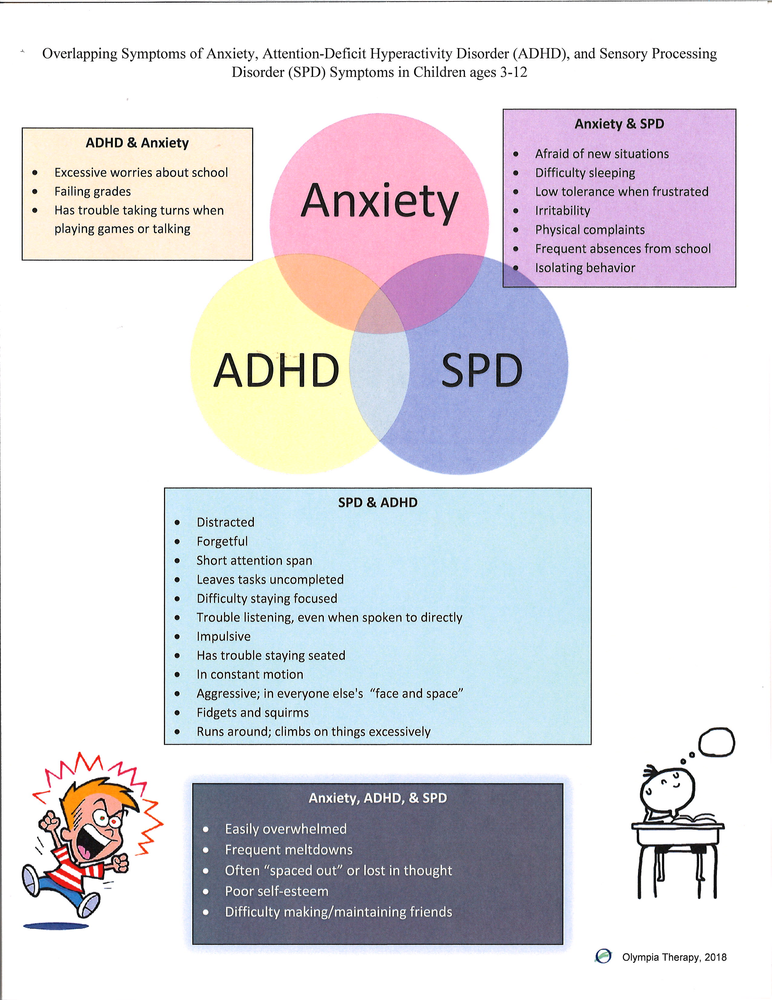 Sometimes people need outside help to solve problems.
Sometimes people need outside help to solve problems.
8 to 10 points
Your answers make you think that you may be paying too much attention to food and body. Based on this, it can be assumed that other important and pleasant aspects of your life are left aside. It seems that nutrition and weight are extremely important to you, one might say, dominate your life. Also, probably, striving for an ideal appearance, you harm your health. If you think it's worth discussing this with someone, one of your options is to contact Peaasi.ee consultants here.
Allpool on meie igapäeva elus tavalised ärevuse tunnused. Testi ennast, kui tavaline Sina oled!?
1. Some of the following things make me afraid,
and I try to stay away from them: any animal (for example, a cat or a dog).
2. Sometimes I feel discomfort in my body, for example, an emptiness in my stomach, a lump in my throat,
rapid or too strong heartbeat, excessive sweating; although it is not hot,
I am covered with a blush, there is a feeling of weakness, my voice begins to tremble or wheeze.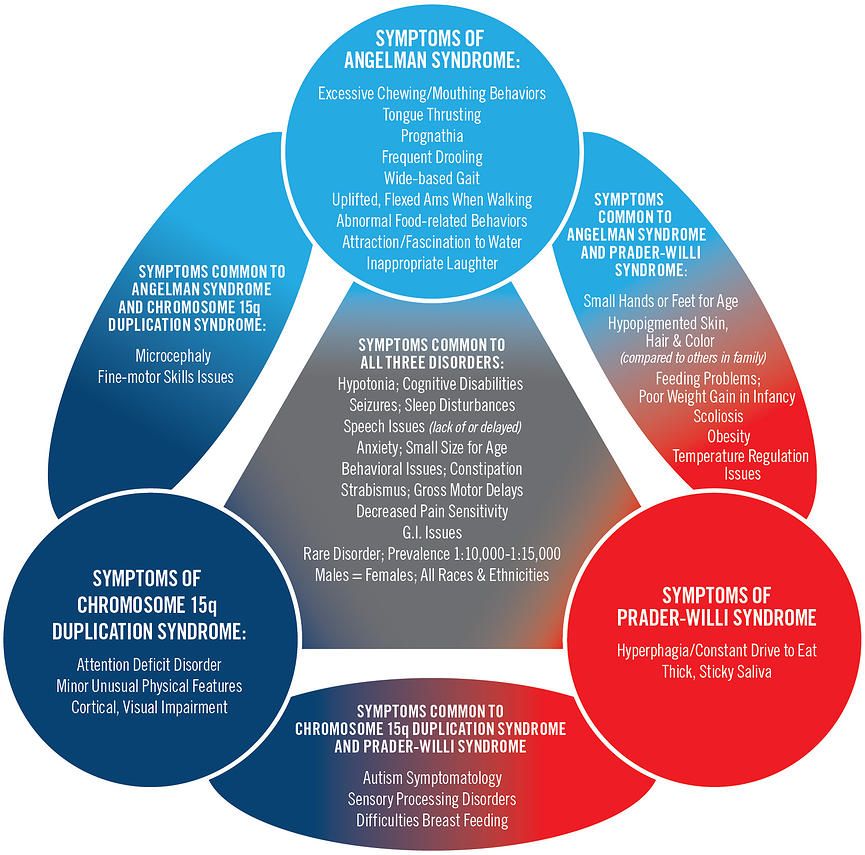
3. I don't even want to think about being in an open place, like an empty parking lot,
in a big field, or even a desert.
4. I avoid large gatherings of people, they make me anxious.
5. I panic just before a test, exam, or speech in front of a class.
6. I feel bad just thinking that I might get hurt,
or that I have a serious illness.
7. Sometimes I don't notice what I'm being told because I'm
nervous about other things.
8. Sometimes I get so nervous about something that I forget about
to everyone in the world, I just can't stop being nervous.
9. It is uncomfortable for me to appear in a new company. .
10.Sometimes I'm not sure if I locked the door, turned off the computer or put the keys in my pocket,
and I have to double-check this several times.
11. Sometimes I am so worried about something that I cannot sleep.
12. I find it difficult to talk to strangers.
13. I prefer not to call strangers.
14. Sometimes I am very tense and cannot relax.
15. Sometimes my head, back, or other part of my body hurts from exertion.
16. Sometimes I get so impatient and restless that I can't sit
in one place, I have to constantly adjust my clothes, hairdo or walk.
17. Sometimes I became shy, afraid of every rustle, knock or strange sound.
18. I am afraid to travel in public transport such as trams, trains,
buses or cars.
19. I am afraid of losing consciousness among the crowd.
Kui vastasid ka enamusele jaatavalt, paistab oled ikka täiesti tavaline inimene. Ärevus on tavaline tunne!
Rõõm on näha, et mõistad nüüd paremini ärevushäirega inimest ja tema haigusest tingitud muresid.
Psychosis is a disease of the brain, the symptoms of which are disorders of various brain functions, such as perception, attention, memory, motivation. Many disorders occur in healthy people, but the cause lies in the normal aspects of our perception. The questionnaire was used for a short time or so rarely that it does not interfere with life. If psychosis begins to recur or does not go away, then the person may be diagnosed with schizophrenia.
The questionnaire was used for a short time or so rarely that it does not interfere with life. If psychosis begins to recur or does not go away, then the person may be diagnosed with schizophrenia.
Below is a list of situations that can happen in everyday life from the article:
1. Sometimes I can't remember where I put the keys and have to look for them.
2. At times, when I try to remember a name or word, it first turns on my tongue, and only then do I pronounce it.
3. Sometimes it seems to me that the phone is ringing (or someone is calling me on the street), and then I think that it seemed to me.
4. Sometimes I notice a friend from afar, but when I approach him, it turns out that this is a completely different person.
5. Sometimes I remember this or that event or conversation so clearly that I am convinced of its reality, but then it turns out that I was mistaken.
6. One day I was driving too fast and as soon as I passed by, a police car parked on the side of the road started to move.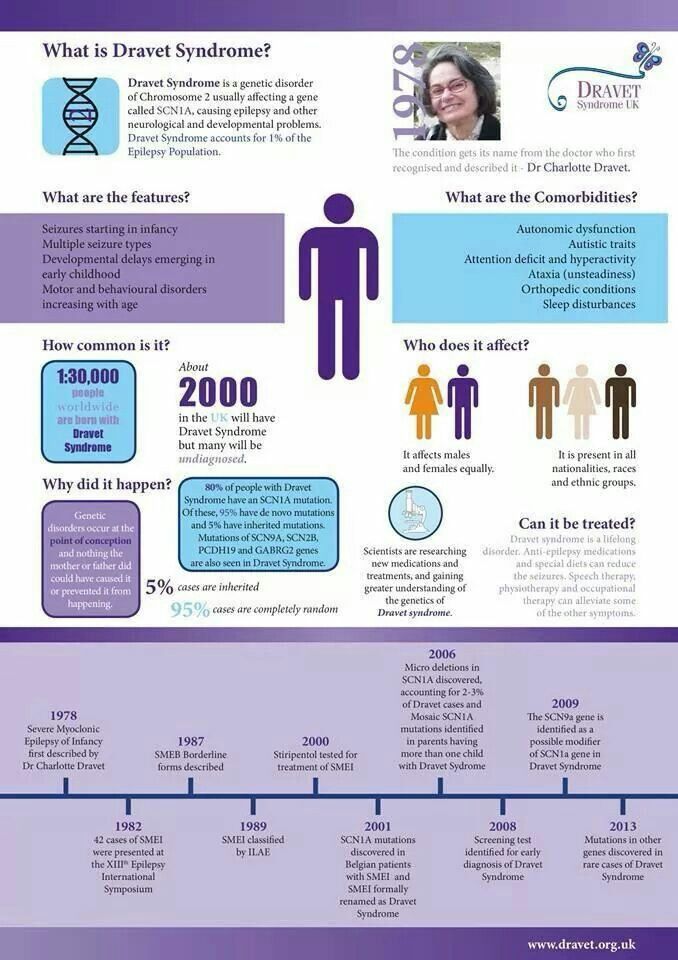 I thought that I would be fined, but this did not happen.
I thought that I would be fined, but this did not happen.
7. Sometimes interesting coincidences happen to me. For example, once I was vacationing in another city, I met an old friend there whom I had not seen for many years. I thought: What a coincidence! How likely is this to happen at all?
8. Sometimes the following happened: I think about something, then turn on the radio, and they talk about the same thing that I was thinking about. There was a thought: "This is a coincidence, I just thought about it!"
9. Once I saw a trick, which I then thought about all the time. When I remember him, I immediately begin to think what his secret is.
10. One day, entering a dark room, it seemed to me that someone was standing in the corner. When I turned on the light, it turned out that it was a hanger, which seemed like a person in the dark.
11. Sometimes I see or hear something about which I know for sure that it is only my imagination.
12. Once in nature, someone said about ticks or other insects, after which I had the feeling that someone was crawling on me, or I started to itch everywhere, but did not find a single insect on me.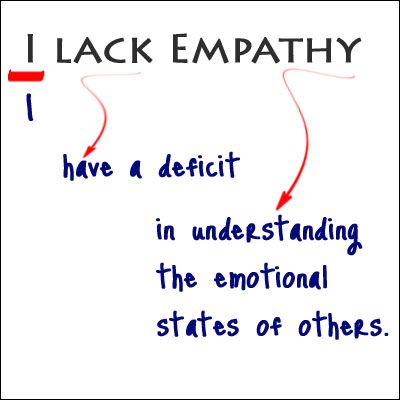
13. When I am in love, it seems to me that most of the topics in the conversation concern my beloved. Ordinary things take on special significance. For example. places where we walked together, or objects belonging to her. For example, my beloved had a blue Audi, and every time such a car drove past me, for a moment I was sure that it was her.
14. Sometimes some melody comes to mind, from which it is not possible to "get rid of" in any way.
PDF: Avasta oma psühhootiline osa!
The questionnaire used the article: Normalizing psychotic symptoms. Michael Garrett, David Stone, Douglas Turkington. Psychology and Psychotherapy: Theory, Research and Practice (2006), 79, 595–610
- väsimus
- negatiivne affect: ärevus, ülivalvsus, ärrituvus, viha
- ükskõiksus, tühi tunne, apaatia
- pingetaluvuse langus, ärritumine või jõuetusetunne varem pisiasjadeks peetu peale
- tahtejõu ja motivatsiooni langus, tunne, et ei taha, ei jaksa
- keskendumisraskused
- probleemid une või söömisega
- füüsilised sümptomid nagu valud , südame kloppimine, iiveldus, pearinglus
- haigused, näiteks allergiad, seedeelundkonna haigused, sagedane haigestumine külmetushaigustesse
- töö ei paku endistviisi rõõmu
- raskused töö- ja eraelu eristamisel, töö koju kaasa võtmine
- mõtlemisvead, nagu must-valge maailmapilt, katastrofeerimine, üleüldistamine
- ennastkahjustavate käitumiste osakaal suureneb: rohkem on alkoholi, tubakat, tülisid
- vähenevad töövälised tegevused, loobutakse hobidest, sõprade ja perega koos tegutsemisest
- oskamatuse ja võimetuse tunne teatud õpilastega/klassiga töötades
- vähenevad töövälised tegevused, loobutakse hobidest, sõprade ja perega koos tegutsemisest
- Lootusetuse tunne
Vaata seat!
Mida teha, kui tunnuseid on palju?
Mida ise teha ja kuhu pöörduda?
Kui Sa ennast nii tunned, siis tähendab see, et on hädasti tarvis midagi teisiti teha. Tee endale nimekiri, mis on Sulle elus kõige tähtsam. Tee nimekiri asjadest, mida saad kohe teha, et end paremini tundma hakata. Õpi ütlema "ei" nendele asjadele, mis ei kuulu Sinu prioriteetide juurde. Defineeri uuesti oma töö, mis on sinu vastutus ja mis mitte. Võimalusel aruta see läbi oma ülemuse või kolleegidega.
Tee endale nimekiri, mis on Sulle elus kõige tähtsam. Tee nimekiri asjadest, mida saad kohe teha, et end paremini tundma hakata. Õpi ütlema "ei" nendele asjadele, mis ei kuulu Sinu prioriteetide juurde. Defineeri uuesti oma töö, mis on sinu vastutus ja mis mitte. Võimalusel aruta see läbi oma ülemuse või kolleegidega.
Riskifaktoriks on näiteks suure surve all töötamine, töö, mille üle on vähe kontrolli, ebaselged ootused või tööülesanded, väga rutiinne töö, tunnustuse puudus. Riski suurendavad isiksuse omadusena täiuslikkuse taotlemine, kõrge saavutusvajadus, delegeerimise raskused, vajadus kontrollida toimuvat, pessimistlik mina- ja maailmapilt. Käitumisega seotud asjaoludest on riskantsed liiga paljude kohustuste võtmine, liigne töötamine võimaluseta, et keegi asendaks, tasakaalu puudumine töö ja puhkamise vahel, puudulik aeg pere, sõprade ja lähedastega suhete hoidmise jaoks, teiste kõrged ootused ja nõudmised töö suhtes.
Tee kõik selleks, et saaksid korralikult magada. Korralik uni tähendab reeglina kaheksat unetundi ning seda, et uinumine ei võta üle poole tunni aega, uni ei ole katkendlik ega pinnapealne, ei ole liiga varast ärkamist.
Korralik uni tähendab reeglina kaheksat unetundi ning seda, et uinumine ei võta üle poole tunni aega, uni ei ole katkendlik ega pinnapealne, ei ole liiga varast ärkamist.
Tee vähem toöd ja puhka rohkem! Vaata üle, mida tähendab Sinu jaoks puhkamine ning millal seda teha saaksid. Võimalusel plaani igasse päeva või nädalasse tegevusi, mis sinu jaoks puhkust tähendavad. Kui puhkust ei ole tulemas või seda ei ole võimalik planeerida, on vaja võtta haigusleht.
Leia võimalust arutada raskusi kolleegidega, kovisiooniks või supervisiooniks.
Leia võimalus kehaliseks aktiivsuseks iga päev, piisab kas või poolest tunnist. Vaata üle oma toitumisharjumused. Toitumine peaks olema tavaline, tervislik ning regulaarne. Alkohol ning muud mõnuained süvendavad halba enesetunnet pikemas perspektiivis ning tuleks menüüst välja jätta.
Mõtle läbi tegevused, mida sulle meeldib teha ning vali välja, mida järgmiseks teed. Abiks on loovus ja mangulisus. Tee midagi teisiti või midagi rutiinist erinevat.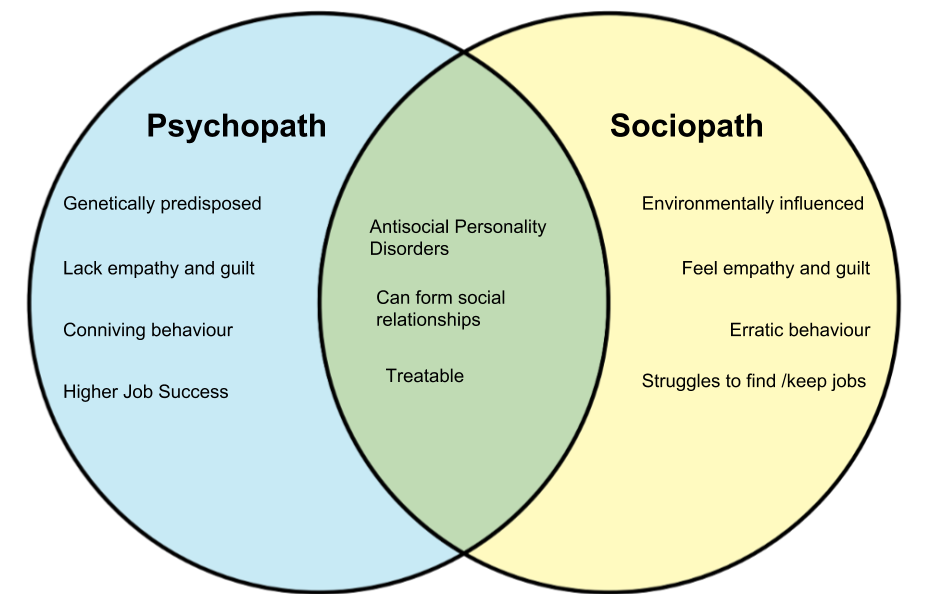
Leia lisaks liikumisele, loovusele, unele ja toitumisele veel võimalusi oma elus stressi maandamiseks. Selleks uuri, mis just Sinu elus praegu stressi tekitab ning leia võimalus selle mõju vähendamiseks.
How to talk and what to expect?
Use the same principles as you would with a teenager. Don't forget the goals: they can be cooperation in helping the child.
This will help you:
- A clear statement of the purpose of the conversation. Immediately in the introduction, say that the goal is cooperation, and what it should lead to.
- Before the conversation, put yourself in the place of a parent. Imagine that your child has a problem that you consider shameful and that you blame yourself for. This is the most common perception behavior in relation to a child's mental health.
- Use the word "we". During the conversation, use an approach that makes it clear that everyone is trying to help the teen: "Let's talk about what we can do together for Mark.
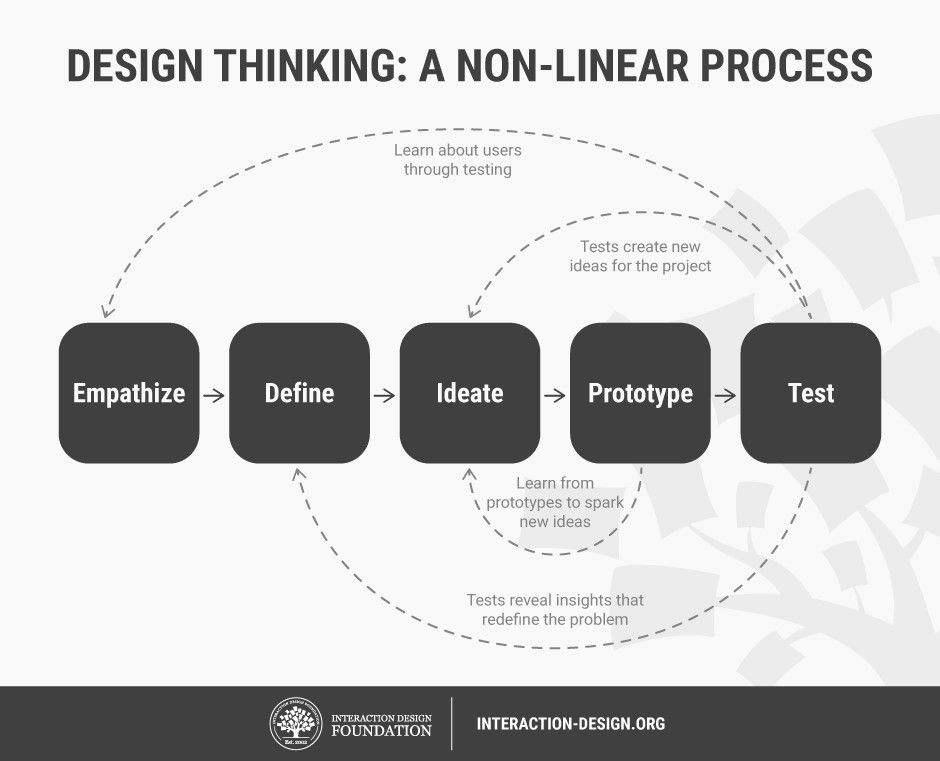 "
" - Talk about your needs and problems. Talking about what is difficult for us, in a sense, we make ourselves vulnerable, but at the same time it will help the parent to better understand the essence of the problem. For example: “It is difficult for me to tell a teenager about fractions if his attention in the lesson is focused on the phone or the situation outside the window.”. "I'm worried that if there are gaps in the curriculum, it will be even more difficult for a teenager next year."
- Description of one's observations without making any assessments. It doesn't help a teenager if we describe him as a careless, sullen, or bad student. Instead, say, “I noticed that when the others began to complete the task, Mark began to fidget, scratch his leg, then pulled out his phone. When I asked to put it back, Mark began to look out the window, continuing to fidget.
- Drawing up a program of action. Try to find at least something that can be done right away to help a teenager.
 Reach out to someone, find additional information, discuss the issue with a teenager. Agree on a specific position to take with respect to the teenager and what to say to him. For example, parents and teachers may agree to start giving a teenager feedback on both bad and good behavior.
Reach out to someone, find additional information, discuss the issue with a teenager. Agree on a specific position to take with respect to the teenager and what to say to him. For example, parents and teachers may agree to start giving a teenager feedback on both bad and good behavior.
On the Internet, the steps will be collected in a diagram that is easy to grasp and understand.
Tips for teachers
Tips to make it easier for teachers to work with children who have difficulty concentrating and communicating.
Recommendations for teachers
Recommendations for teachers on how to make it easier to work with children with aggressive behavior.
How to talk to a child/teenager?
You need to set the goals of the conversation. Think about the purpose of the conversation yourself and tell your teenager about it! It is important to tell the teenager why you want to talk to him. It will be good if you indicate as accurately as possible what you noticed and what worries you. Tell us how you can help. Keep in mind that mental health topics can be embarrassing, so the discussion should be done with respect and tact. Usually, the goal is to more accurately define the problem and, if necessary, facilitate further seeking of help.
Tell us how you can help. Keep in mind that mental health topics can be embarrassing, so the discussion should be done with respect and tact. Usually, the goal is to more accurately define the problem and, if necessary, facilitate further seeking of help.
Note that sometimes the goal is to notice and ask. If there is no immediate threat, we must respect the right to remain silent. Even if a teenager does not want to answer or discuss in more detail, it is very important to give him the opportunity to do so. This too can lead to positive changes.
Time and place. It is important to find the right time for a conversation, to make sure that both you and the interlocutor do not need to rush anywhere. It is important to find a place for conversation where you will not be disturbed, and where you can comfortably sit opposite each other.
Ask open-ended questions. When formulating questions, try to make it clear that you are ready to listen to the teenager and have not yet drawn any conclusions about what is happening.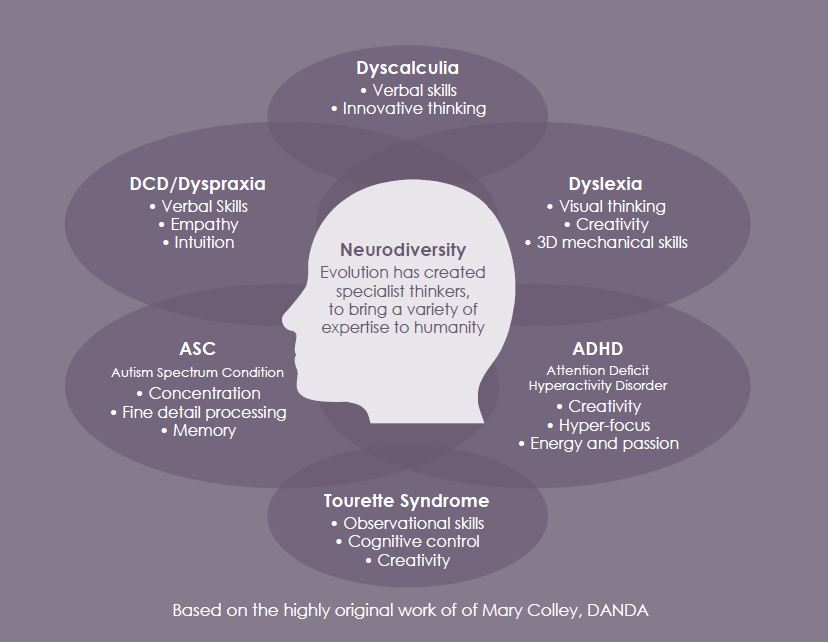 Ask open-ended questions. If the teenager is not very talkative, ask, for example: “Tell me more…” Give examples: “Sometimes people behave this way because…. With you too?"
Ask open-ended questions. If the teenager is not very talkative, ask, for example: “Tell me more…” Give examples: “Sometimes people behave this way because…. With you too?"
Temp. Talk at a calm pace. Do not rush to give advice, keep pauses in the conversation so that the interlocutor can add information that is important to him. Before you conclude, ask again if there is anything important left unsaid.
Confidentiality and keeping secrets. Let your teen know if you can't keep your information private. This is not possible if the teenager needs the help of other specialists. You may not disclose details and details, but if it turns out that a teenager is in danger, it is necessary to inform the persons who can help him about this. If the teenager is already undergoing treatment, then in accordance with the law on the protection of personal data, the healthcare professional cannot disseminate this information on their own initiative. If the family, the school, the health worker and social worker, and the adolescent himself/herself are ready to cooperate in solving the problem, then any information can be exchanged among themselves. To do this, it is necessary to discuss this among themselves and obtain consent from the family and the teenager.
If the family, the school, the health worker and social worker, and the adolescent himself/herself are ready to cooperate in solving the problem, then any information can be exchanged among themselves. To do this, it is necessary to discuss this among themselves and obtain consent from the family and the teenager.
New assessment: Is it dangerous?
When assessing the possible threat and planning the intervention, also take into account the teenager's home situation: whether he has parents who fulfill their duties, or whether he lives alone or without guardianship.
If yes
Same as step 1.
If no:
Where to next? Where to send?
See list of specialists, database Lahendus.net etc.
What can a teacher do if they notice a change in a student's behavior?
How dangerous is the situation?
A dangerous situation is when a person has inflicted bodily harm on himself or someone else, or expressed some thoughts or plans regarding this.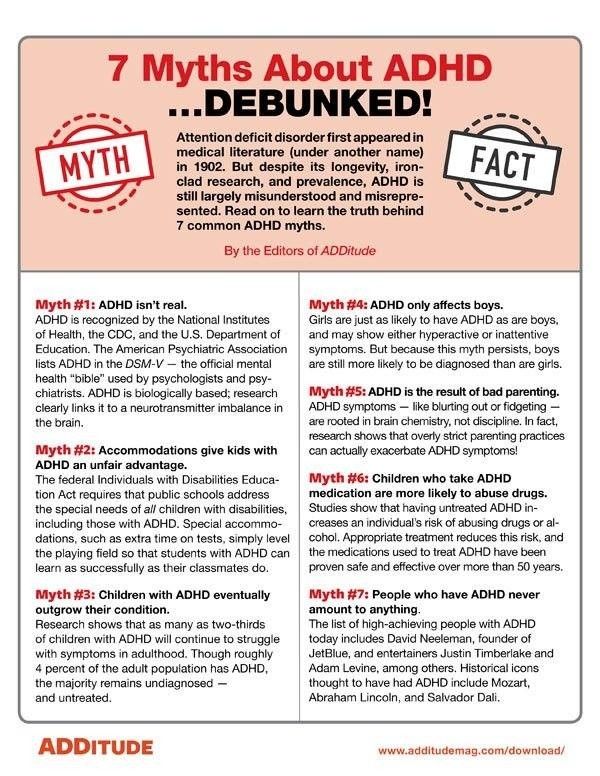 It also refers to a dangerous situation where a person has been harmed as a result of physical violence, intimidation or sexual violence, as well as being left unattended.[/vc_column_text]
It also refers to a dangerous situation where a person has been harmed as a result of physical violence, intimidation or sexual violence, as well as being left unattended.[/vc_column_text]
In case of a positive answer
If the threat arose immediately, then immediately call 112 . Call a colleague or another student for help. Do not leave a child or young person who could injure themselves alone.
If the likely threat occurs at home or elsewhere, contact a local child protection specialist or call the Child Helpline 116111 .
If the answer is negative
Mood
- Sadness and gloom,
- passivity,
- anger and aggressiveness,
- irritability and sullenness,
- detachment,
- abrupt mood changes towards increased activity and cheerfulness,
- feeling of hopelessness,
- indifference, desire to quit everything.
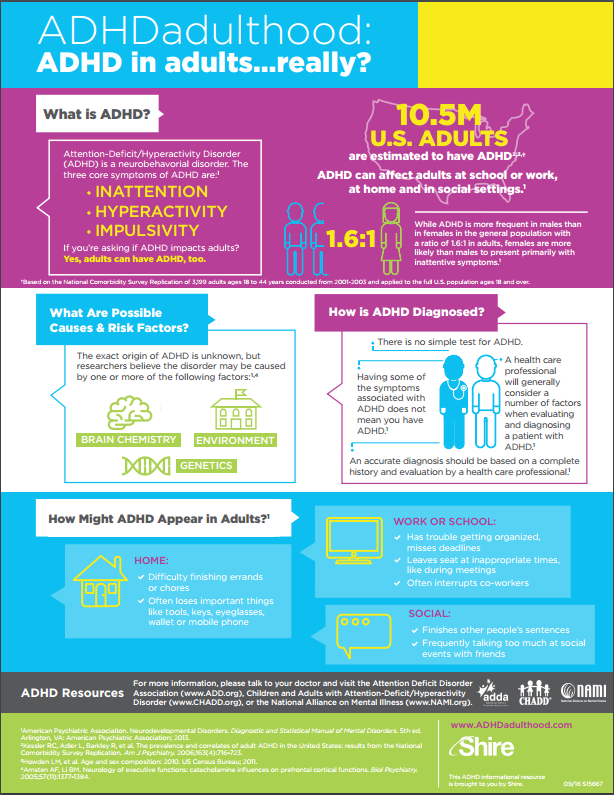
Stress and anxiety
- Anxiety that prevents you from answering in front of a class or orally, taking exams or writing tests,
- tremor in voice or hands,
- unwillingness to answer,
- frequent illnesses,
- complaints of nausea,
- fatigue, exhaustion,
- restlessness, fidgeting,
- drowsiness or insomnia,
- absenteeism, lateness,
- headaches, tension, other pains of unknown cause.
Attention concentration, learning ability
- Decreased academic performance,
- trouble concentrating in class,
- inability to complete tasks in class,
- unwillingness to take part in the lesson,
- unwillingness to follow instructions,
- unnecessary communication disturbing others,
- extraneous activity in the lesson,
- learning rates below their abilities.
Nutrition and appearance
Significant changes
- in nutrition,
- in appearance,
- in weight,
- in clothes,
- extreme changes,
- in clothes,
- in makeup,
- in personal care.
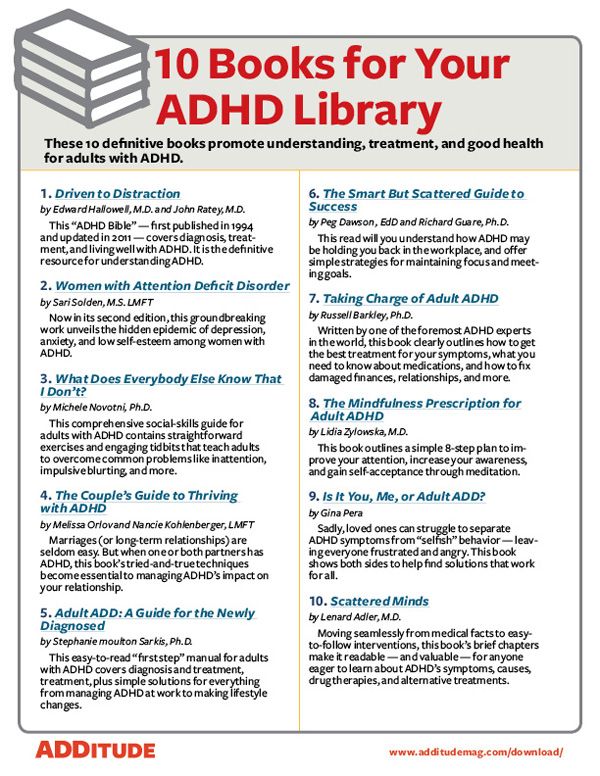
Relationships
- Difficulty understanding what was said,
- difficulty understanding the nuances of communication,
- not understanding jokes or misunderstanding them,
- bullying behavior towards others or being a victim of bullying,
- conflicts with students or teachers,
- being ignored by other students,
- lack of communication with others,
- unwillingness to answer questions,
- avoidance of eye contact.
Unusual or bizarre behavior, self-injury
- Repeating any stereotypical behavior0121
- the need to hide the body under clothing,
- injuries on arms, legs, body.
- Other conspicuous behavior that is difficult to explain.
How do you know if there is a problem?
Depending on the severity of the symptoms, it is necessary to decide how it is usually for a child of his age, whether this happened earlier and during what time .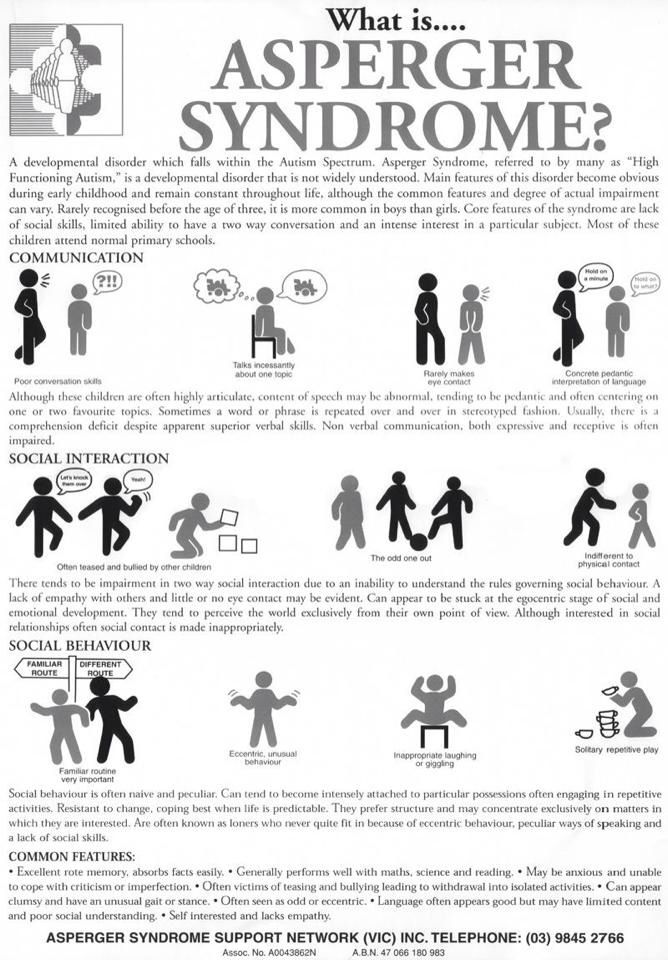 The reason for the response are cases when the problem has been going on for a couple of weeks or a month. And also when the child has difficulty coping with school or other activities. The presence of a problem will help determine the analysis of the causes and sequence of behavior.
The reason for the response are cases when the problem has been going on for a couple of weeks or a month. And also when the child has difficulty coping with school or other activities. The presence of a problem will help determine the analysis of the causes and sequence of behavior.
Causes of the problem
Both factors that we can control and factors beyond our control can cause mental problems. In the occurrence of mental problems, heredity and a component of genetic psychological vulnerability play a role. However, there is always an aspect that can be changed. This aspect is the environment. As a rule, problems appear or become noticeable due to change, stress, a new or difficult situation.
Transferring to a different school and class, moving to a new school level, moving house or family, conflicts can all lead to stress.
“I have Attention Deficit Hyperactivity Disorder!… So what? What it is?" In many ways, this “and what” is correct: you are an ordinary young person with your good and bad moods, high and low amounts of energy.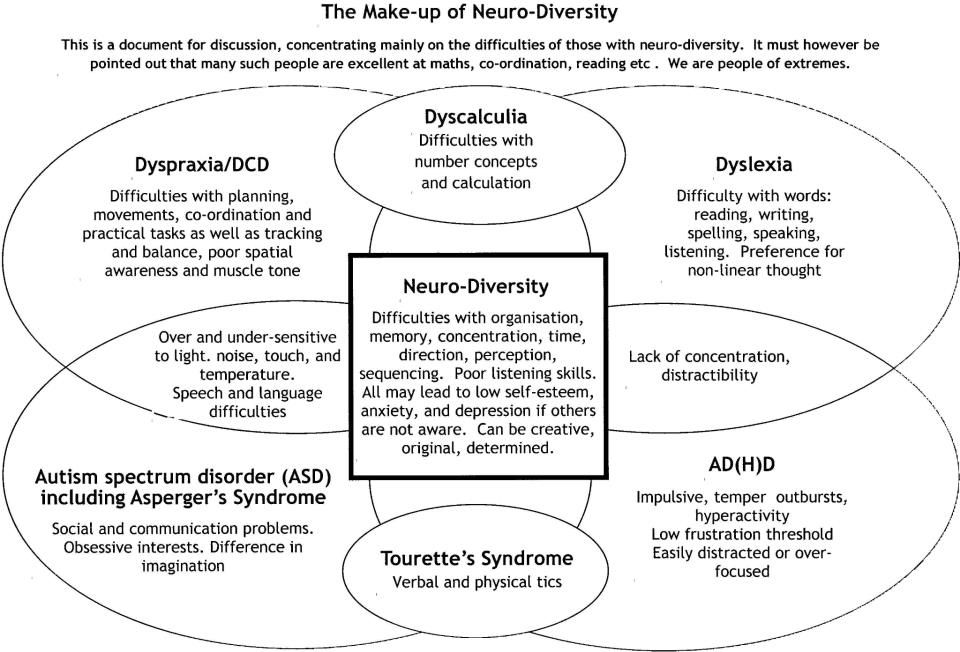 At the same time, life and growing up with Attention Deficit Hyperactivity Disorder (ADHD) is full of challenges and sometimes serious obstacles. People tend to think that only children can have ADHD and that it goes away with age. Unfortunately, this does not correspond to reality. Modern studies have shown that in ⅓ of children with ADHD, it disappears with age, in ⅔ - the symptoms of the disorder remain. So you have to learn to live with it. Young people often believe that they themselves have caused the development of ADHD. This is not true. This is not your fault. ADHD is caused by genes and can also be present in other family members. We are talking about a slightly different functioning of the brain, see peaasi.ee.
At the same time, life and growing up with Attention Deficit Hyperactivity Disorder (ADHD) is full of challenges and sometimes serious obstacles. People tend to think that only children can have ADHD and that it goes away with age. Unfortunately, this does not correspond to reality. Modern studies have shown that in ⅓ of children with ADHD, it disappears with age, in ⅔ - the symptoms of the disorder remain. So you have to learn to live with it. Young people often believe that they themselves have caused the development of ADHD. This is not true. This is not your fault. ADHD is caused by genes and can also be present in other family members. We are talking about a slightly different functioning of the brain, see peaasi.ee.
ADHD is not a disease. Doctors call it a disorder. What then is broken? The ability to concentrate on activities that require mental stress is impaired. In children and adults, the manifestations of the disorder may differ slightly. If in children it is physical hyperactivity that is in the forefront, as a result of which they sometimes resemble "energizing hares", then in adults and adolescents the disorder is expressed differently.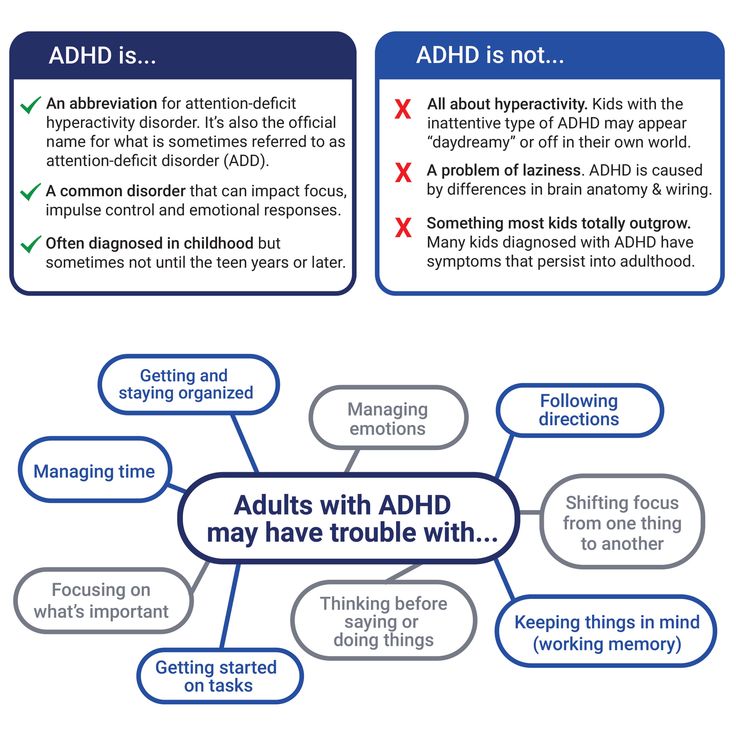 In adults, the main difficulties are related to concentration, absent-mindedness, and problems with meeting agreements and deadlines. There may be difficulty making decisions and sticking to them. In addition, people with ADHD tend to overreact emotionally and impulsively. To get a better idea of what might be causing difficulties, you can ask yourself the following questions.
In adults, the main difficulties are related to concentration, absent-mindedness, and problems with meeting agreements and deadlines. There may be difficulty making decisions and sticking to them. In addition, people with ADHD tend to overreact emotionally and impulsively. To get a better idea of what might be causing difficulties, you can ask yourself the following questions.
ADHD is not only a burden
Sometimes it may seem that ADHD is a real pain, but not always. A friend, child, or parent with ADHD can be special in a good way. So, a person with ADHD can be amazingly creative, sociable, have a vivid imagination, be sensitive, full of empathy and have original thinking. These are all positives! But ADHD-induced behavior can sometimes overshadow these talents. Thus, the latter may go unnoticed and unrecognized. If you have ADHD, then you must take care of this special energy and learn how to direct it in a way that will help develop your strengths.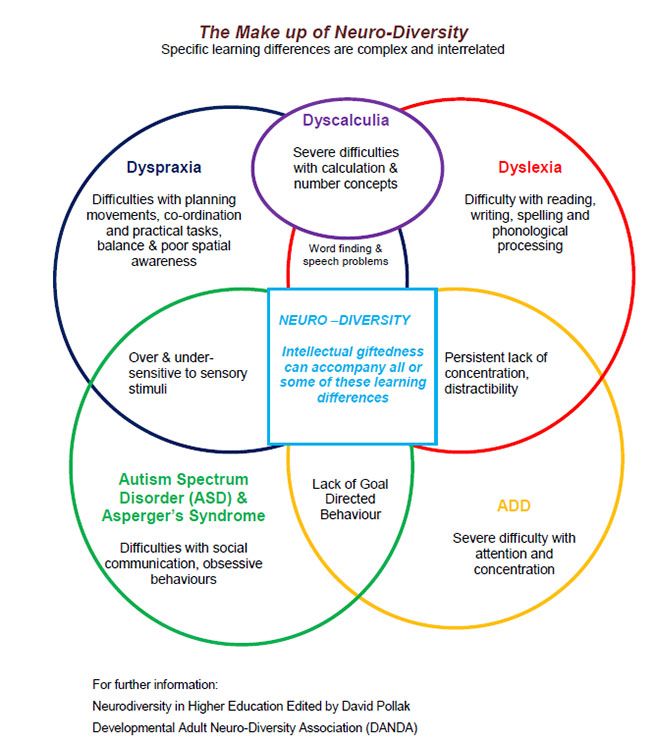
The experience of depression varies from person to person. Depression is a very diverse disease and does not have a single symptom, but there are certain specific symptoms that occur with depression. Symptoms must persist for two weeks The one-time experience is not depression. Symptoms of depression are expressed in behavior, thinking, emotions and physical reactions of the body.
TAKE THE TEST
Peale testi aitab depressiooni hinnata ka järgnev küsimustik.
If you answered YES to THREE or more questions, contact your family doctor, psychiatrist or clinical psychologist to clarify your condition.
Summing up, you can think about the following questions and analyze yourself for two to three weeks:
- Do you often feel sad?
- Do you feel that nothing good can be expected from the future?
- Are you as satisfied with your life as before?
- Do you have more failures in your past than successes?
- Do you often feel guilty about something?
- Do you have to make great efforts to do something?
- Do you feel constant anxiety or worry?
- Do you constantly feel tired?
ADHD symptom test
The ADHD test includes many different symptoms that in one way or another indicate the presence of this mental disorder.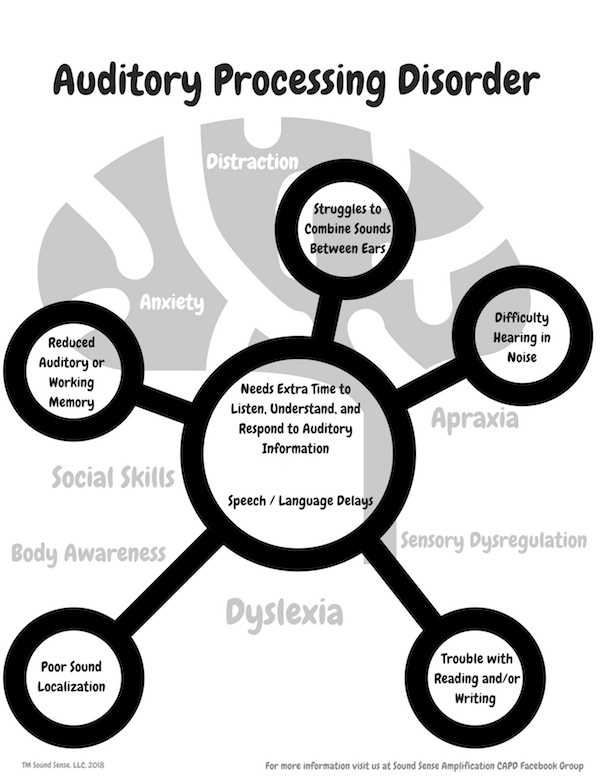 However, the severity of the disease and its symptoms can vary greatly.
However, the severity of the disease and its symptoms can vary greatly.
This test incorporates the results of previous studies to ensure the validity and reliability of the results for identifying symptoms of attention deficit hyperactivity disorder.
Do you have symptoms of ADHD? For each following statement, indicate how much you agree with it.
The ADHD Test (IDR-ADHDST) is owned by IDRlabs. It builds on the work of Dr. Lenard Adler and colleagues who created the ADHD Questionnaire (ASRS). This test is not affiliated with any particular researcher or organization in the field of psychopathology.
The ADHD symptom test is based on material that has been published in the following sources: Kessler RC, Adler L, Ames M, Demler O, Faraone S, Hiripi E, Howes MJ, Jin R, Secnik K, Spencer T, Ustun TB , Walters EE. The World Health Organization Adult ADHD Self-Report Scale (ASRS): a short screening scale for use in the general population. Psychol Med. 2005 Feb;35(2):245-56. doi: 10.1017/s0033291704002892. PMID: 15841682; Adler LA, Spencer T, Faraone SV, Kessler RC, Howes MJ, Biederman J, Secnik K. Validity of pilot Adult ADHD Self-Report Scale (ASRS) to Rate Adult ADHD symptoms. Ann Clin Psychiatry. 2006 Jul-Sep;18(3):145-8. doi: 10.1080/10401230600801077. PMID: 16923651; Adler, L., Faraone, S., Sarocco, P., Atkins, N., Khachatryan, A. (2018). Establishing US norms for the adult ADHD self-report scale and characterizing symptom burden among adults with self-reported ADHD. The International Journal of Clinical Practice.
2005 Feb;35(2):245-56. doi: 10.1017/s0033291704002892. PMID: 15841682; Adler LA, Spencer T, Faraone SV, Kessler RC, Howes MJ, Biederman J, Secnik K. Validity of pilot Adult ADHD Self-Report Scale (ASRS) to Rate Adult ADHD symptoms. Ann Clin Psychiatry. 2006 Jul-Sep;18(3):145-8. doi: 10.1080/10401230600801077. PMID: 16923651; Adler, L., Faraone, S., Sarocco, P., Atkins, N., Khachatryan, A. (2018). Establishing US norms for the adult ADHD self-report scale and characterizing symptom burden among adults with self-reported ADHD. The International Journal of Clinical Practice.
The work of Dr. Adler and colleagues looks at the main symptoms of ADHD. This work also describes certain diagnostic criteria that are intended for clinical use by qualified mental health professionals. This test provides information for educational purposes only. IDRlabs and this test are in no way affiliated with the above researchers, organizations or institutions.
The ADHD symptom test is based on known research on the condition and other psychiatric disorders.